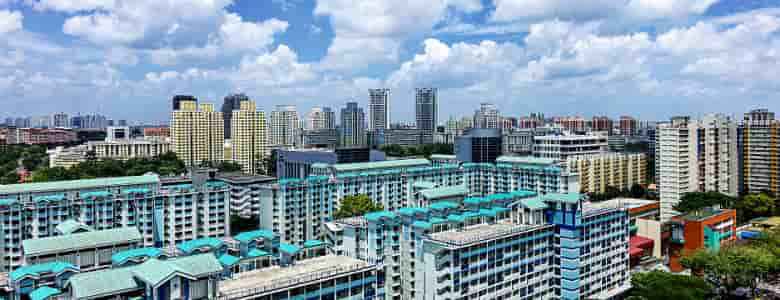Digital Realm of Engineering Marvels

Obvious fact#1: Singapore’s skyline is in a constant state of flux.
Construction barricades and area cordons frequently spring up around our little island, declaring to all who pass by: Watch this space!
But long before even a single brick of a new building is laid, its digital doppelganger would already have been erected — in lines of code — to simulate different materials, features, technologies and strategies that will be used in its actual construction.
(Editor: Think Virtual Singapore).
Not only are the building’s parameters optimised, its impact on nearby structures is also forecasted so that any unintended side effects of its construction can be identified and mitigated in advance
Such is the power of digital technologies to ensure that Singapore’s precious land is well used, and that the structures standing on it are intelligently and safely built, said a panel of experienced engineers from Singapore’s statutory boards.
Speaking at ‘Engineering Marvels of Singapore’, a discussion held on 19 July 2017 as part of the World Engineers Summit, the panellists described how smart technologies such as modelling and simulation have revolutionised the planning and construction of Singapore’s cityscape.
Simulations for sustainable homes
Singapore’s public housing is world renowned, and its high-rise apartment buildings are engineering marvels in their own right.
Over the past 50 years, the Housing and Development Board (HDB) has constructed more than one million buildings that house approximately 80 percent of Singapore’s population.
But HDB is not resting on its laurels, instead continuing to build new towns and improve existing ones with a nobler goal in mind — sustainability.
“We want to improve HDB living and make our public housing more future ready. To do that, we must build with sustainability in mind,” said Mr Tan Sze Tiong, deputy director of environmental building performance research at HDB.
“But before we implement green housing solutions, we want to testbed various technologies and designs, and modelling is an excellent platform to visualise and plan them.”
For example, in the planning of new towns, wind-flow, shading, noise and solar irradiance analysis can be carried out on virtual platforms such as the Integrated Planning and Analysis System (iPLAN) and Virtual Singapore.
If one parameter is found to be unsatisfactory, it is tweaked and tested until the required standards are met, explained Mr. Tan.
Smart technologies for greener buildings
Given Singapore’s tropical climate, approximately 25 percent of its energy is used for cooling purposes. Air-conditioned offices and apartments are thus major energy sinks.
But nestled within the Building and Construction Authority (BCA) Academy at Braddell Road, the Zero Energy Building (ZEB) is defying convention by being the first retrofitted structure in Southeast Asia to achieve—you guessed it—net zero energy consumption.
This feat was achieved through the use of a suite of green building technologies—more than 30 of them, said Ms Alice Goh, principal manager at BCA.
Solar chimneys, for example, ventilate the building using the convection of air heated by energy from the sun.
But BCA is aiming even higher. “Moving forward, we intend to improve the energy performance of the ZEB, even generating a 40 percent energy surplus,” Ms Goh added.
To do this, there are plans to incorporate a host of smart technologies into the ZEB, including numerous sensors that will collect data on occupants’ activities, energy consumption habits and comfort levels.
This data will be fed back in real time to a smart building management system, which will then analyse it and use the information to adjust indoor conditions accordingly.
This fine-tuning allows for maximum energy efficiency as well as comfort of the building’s occupants.
Data tunnelling
In addition to sustainability, smart technologies can also be used to ensure safety.
Imagine having to excavate huge tunnels beneath buildings and between existing train lines, as the Land Transport Authority (LTA) had to do during the construction of certain stretches of the Downtown Line, the newest addition to Singapore’s subway network.
“Because there are so many pre-existing lines, the underground spaces that we work with are very congested,” said Mr Chang Kin Boon, a project director at LTA.
“At some stretches, we were trying to squeeze the Downtown Line between the North-East and East-West Lines, and the gap between the new and old train tunnels was a mere one metre. It was so close that if you reached over from the new tunnels, you could pluck a passenger from a passing train!”
It was thus imperative to be certain that the tunnels as well as the ground above them would hold.
Using extensive data collected by instrumentation deployed during the construction of tunnels between Bendemeer and Jalan Besar stations, LTA engineers were able to generate settlement prediction models.
These helped them assess the tunnelling-related risks for other stations along the Downtown Line, and thus plan construction strategies to mitigate these risks.
So the next time you visit a new well-designed HDB estate, cool off in an energy-efficient office building, or zip along the Downtown Line, spare a thought for the smart technologies that enabled them — as well as the engineers who made all these engineering marvels possible.
Photo Credit:
- Image of DownTown Line tunnel: Creative Commons DownTown Line tunnel by SgTransport licensed under CC by 2.0.

